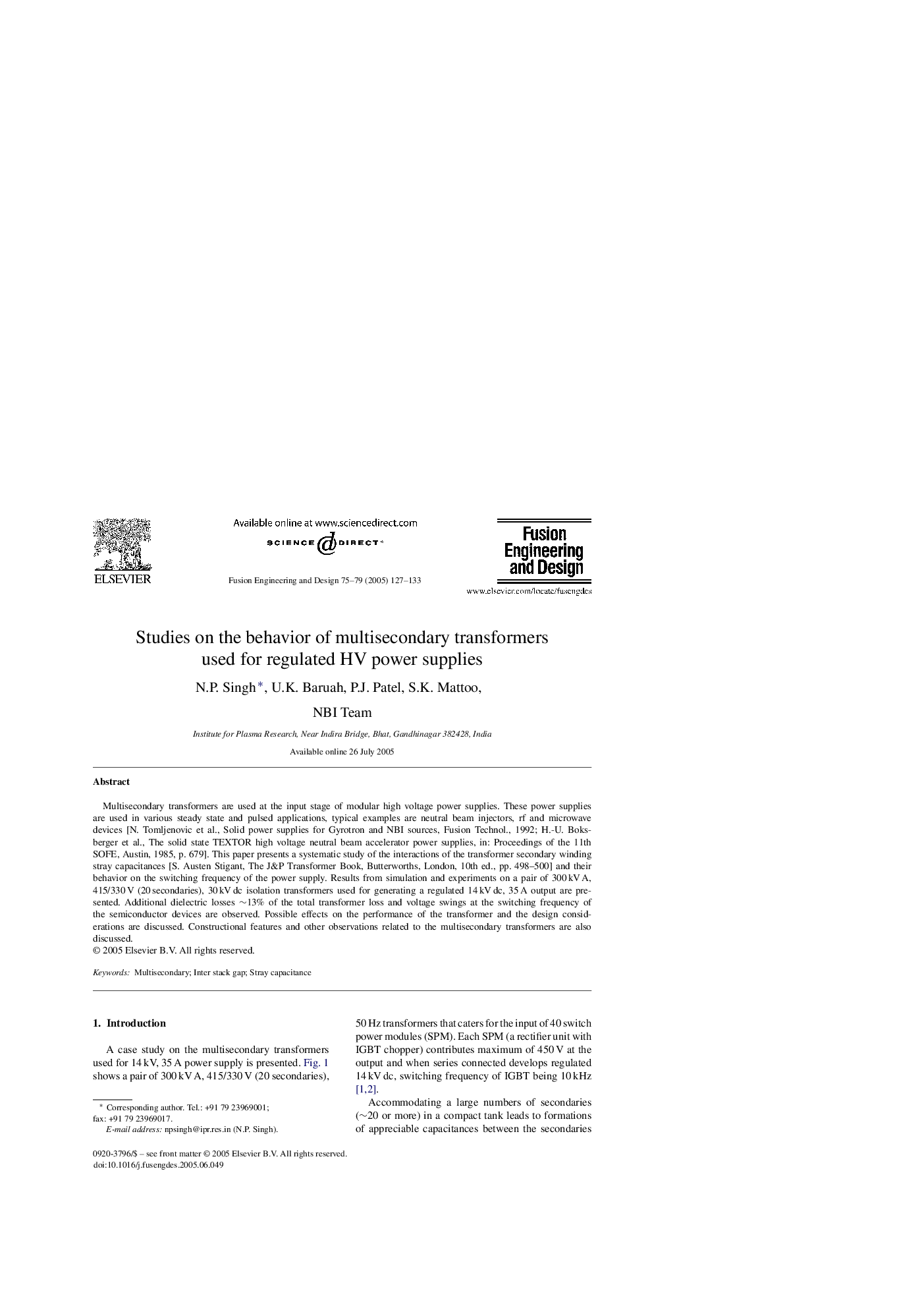| Article ID | Journal | Published Year | Pages | File Type |
|---|---|---|---|---|
| 9638216 | Fusion Engineering and Design | 2005 | 7 Pages |
Abstract
Multisecondary transformers are used at the input stage of modular high voltage power supplies. These power supplies are used in various steady state and pulsed applications, typical examples are neutral beam injectors, rf and microwave devices [N. Tomljenovic et al., Solid power supplies for Gyrotron and NBI sources, Fusion Technol., 1992; H.-U. Boksberger et al., The solid state TEXTOR high voltage neutral beam accelerator power supplies, in: Proceedings of the 11th SOFE, Austin, 1985, p. 679]. This paper presents a systematic study of the interactions of the transformer secondary winding stray capacitances [S. Austen Stigant, The J&P Transformer Book, Butterworths, London, 10th ed., pp. 498-500] and their behavior on the switching frequency of the power supply. Results from simulation and experiments on a pair of 300Â kVÂ A, 415/330Â V (20Â secondaries), 30Â kVÂ dc isolation transformers used for generating a regulated 14Â kVÂ dc, 35Â A output are presented. Additional dielectric losses â¼13% of the total transformer loss and voltage swings at the switching frequency of the semiconductor devices are observed. Possible effects on the performance of the transformer and the design considerations are discussed. Constructional features and other observations related to the multisecondary transformers are also discussed.
Keywords
Related Topics
Physical Sciences and Engineering
Energy
Energy Engineering and Power Technology
Authors
N.P. Singh, U.K. Baruah, P.J. Patel, S.K. Mattoo, NBI Team NBI Team,
